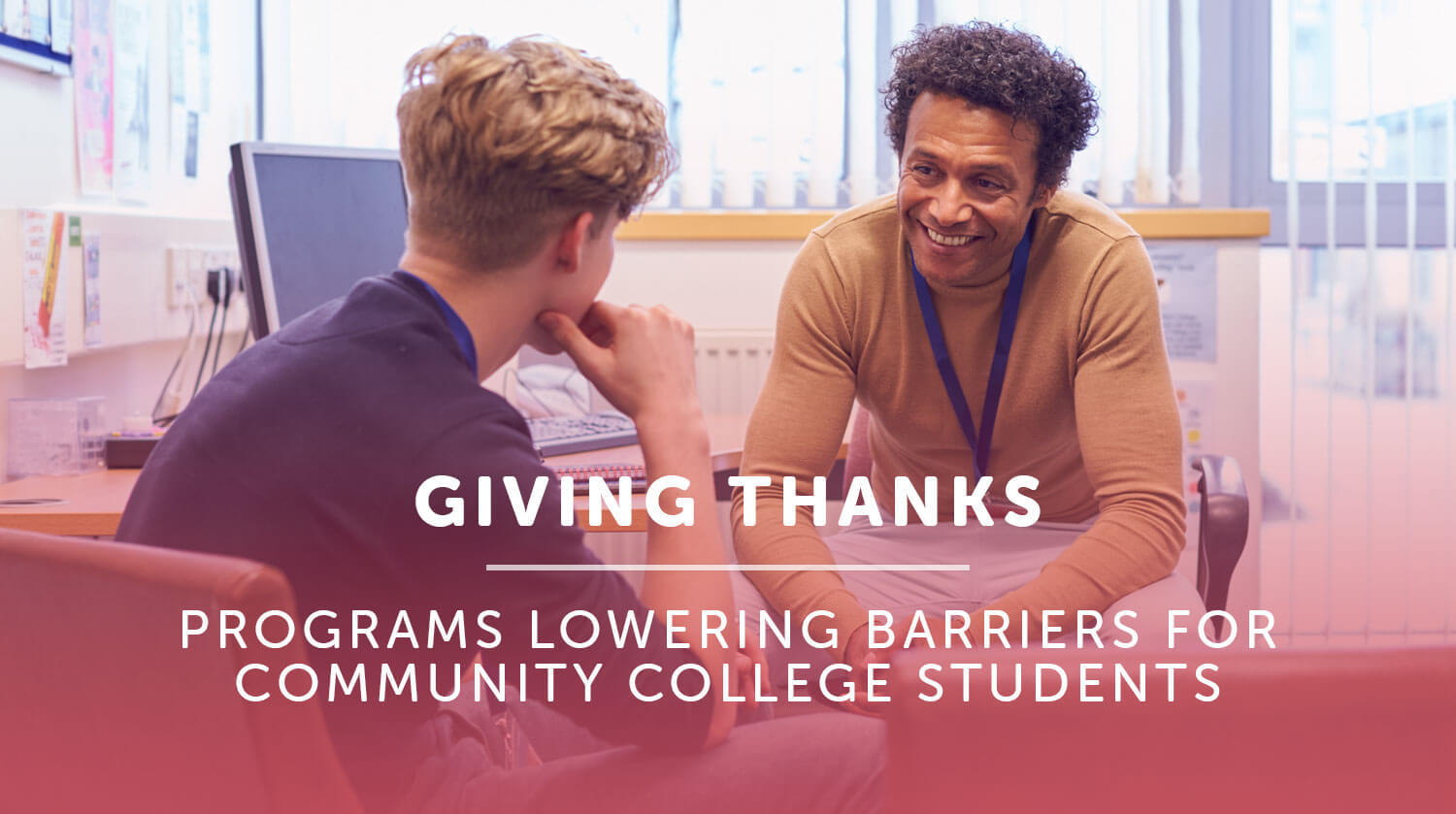Community colleges are full of dedicated administrators working hard to support students. Here are some examples of support programs rising to meet the challenge.
We’ve written a lot this year about barriers to enrollment and ways community colleges can address them. Many of these barriers are both prevalent and complex, such that untangling them can be daunting, even with the best intentions.
Nevertheless, many community colleges, in collaboration with other programs both public and private, are making great strides in lowering or eliminating access barriers to students. We feel it is appropriate to take a moment to celebrate their work and show that helping students enroll is not out of reach. Here are examples of programs working with community colleges to overcome the most prevalent enrollment barriers.
Student-parents: Head Start and The Association of Community College Trustees
We wrote earlier this year about the lack of on-campus childcare options for parent-students. While this situation remains an ongoing obstacle, there is hope for a positive solution. Head Start, a national program whose mission is to support early childhood development, announced a partnership in March with the Association of Community College Trustees with the mission of bringing more childcare to community college campuses.
Community colleges will provide the facilities, allowing the program to meet its federal funding needs, while Head Start hopes to resolve labor force issues by recruiting early childhood education students from the campus. The outcome: free, quality childcare for students as well as a new on-site employer.
Comprehensive support: Family Foundations Downeast and Ventura College
One of the most holistic solutions we found was by Family Foundations Downeast (FFD), a program funded 55% by the State of Maine with the rest of its resources coming from a mix of private and public foundations. FFD follows a two-generational approach, where parents with young children enroll as a peer cohort with other young parents, which provides emotional and social support.
They work with coaches who support them through their educational journey, helping them to navigate certificate, associate, and bachelor’s degree programs at either Washington County Community College or the University of Maine at Machias. Coaches also help them connect their educational goals with career goals, tying the program itself to economic opportunities.
While parents attend night classes, children under eight years old receive early childhood education with a focus on social-emotional learning, language development, and literacy. Family coaches work with parents to identify resources for older children so that they, too, have opportunities for education, recreation, and community-building.
FFD was comprehensive in its assessment of student need. Participants are loaned a laptop with a WiFi hotspot for the first year of the program, and are even given transportation assistance through gas cards or volunteer drivers.
FFD represents a robust solution, but there’s plenty of low-hanging fruit available for colleges simply by lifting up the programs they already offer. Ventura College in California is a great example. They offer a basic needs portal that makes it easier for students to find and access the services they need, which include food, housing, mental health, and transportation resources. By making a comprehensive list of student support services more clearly available, they increase the likelihood that the students who need them most will be able to access them.
Career pathways: Zane State College and Apprenti
We’ve long written about how community college courses attract more students when they strongly align with career paths and employment opportunities. Take Zane State College in Ohio as an example. They not only have a dean dedicated to workforce development in their community, which can help to nurture local business development, but they’re also partnering with Intel to create programs that will align worker training with the new jobs coming to their region.
Another innovative project in the career pathways space, Apprenti is bringing the traditional apprenticeship model to high tech jobs. A nonprofit funded with support from the U.S. Department of Labor, Employment, and Training Administration, Apprenti helps match adults who are interested in a career in tech but don’t have the qualifications with employers seeking to grow a more stable and qualified talent pipeline. Successful applicants go through a fully funded training period to prepare them for their job, followed by a full year of paid on-the-job training.
Programs like Apprenti or the ones offered by Zane State are examples of how community colleges with targeted training programs following an apprenticeship model can work with employers to link trainees to careers once they graduate.
Are you offering programs that reduce barriers? Spread the word.
As we said at the beginning of this article, many community colleges are working hard to improve the experience of students on campus. But often programs underperform despite their best efforts from a lack of publicity. If prospective students don’t know your program exists, they won’t know to sign up for it.
At Aperture Content Marketing, our goal is to help community colleges grow enrollment by sharing information-rich articles about the programs and services offered by their institution—and to connect those programs with valuable careers. We offer a library of researched content on a range of subjects, from employment prospects to campus resources. Our customers can draw on this library to create their own marketing materials, and then distribute them using our multichannel marketing platform which includes print mailers, social media, and online microsites.
If you would like to learn more about how our marking solutions can broaden your institutional reach, contact us today.


